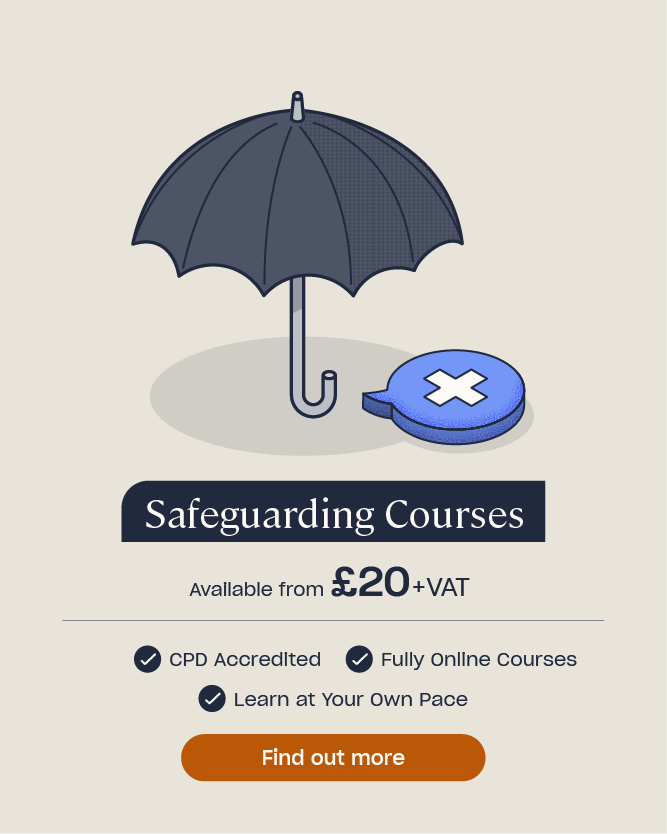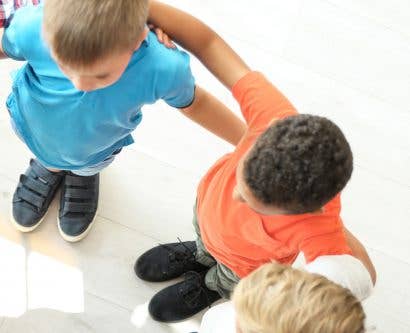What is Contextual Safeguarding & Why is it Important?
Contextual safeguarding is a topic which is mentioned frequently in local authorities’ strategy discussions. Following a substantial amount of research, the term was first added to the government’s Working Together to Safeguard Children guidance in 2018, and has become increasingly recognised and implemented in safeguarding policies across the country. As a result, it is important for you to understand exactly what it is, and how it influences your role in keeping young people safe.
In this article, we will provide an explanation of contextual safeguarding and why it matters, in relation to your position in safeguarding. This will help you to ensure that you are safeguarding as effectively as you can be, and putting current research into practice in your work.
What is Contextual Safeguarding?
Contextual safeguarding is an approach to safeguarding that recognises that young people may be at risk of significant harm not only within their home environment, but also outside it. The traditional safeguarding approach does not consider extra-familial contexts, which has led to cases of abuse and exploitation falling under the radar.
Extra-familial contexts include young people’s peer groups, support networks, online contacts, and local community or neighbourhood. Safeguarding concerns in these contexts could consist of harassment or violence from their peers, a risk of grooming – whether online or in person – high levels of crime or gang violence in your local area, or even a local park where frequent incident reports have been made.

As well as involving wider consideration of contexts, contextual safeguarding entails a different method of intervention from the traditional approach. In the past, all interventions have taken place with the young person and their family, regardless of where the harm originated from. However, it has been shown that this is inadequate in cases of extra-familial abuse; parents do not have any control over these outside contexts, and cannot change them.
A more effective method is to intervene with the outside environment itself, to prevent harm from occurring in the first place. For example, if you know that a certain park has high levels of criminal activity, you could contact the council and ask for bushes to be cut back, higher levels of lighting, and more patrols by park wardens. This is an example of a contextual safeguarding provision in practice.
Why is Contextual Safeguarding Important?
Contextual safeguarding does not just focus on one individual, but on how to protect all young people from environments that cause safeguarding issues. In other words, it addresses the underlying causes, not just the effects. It uses partnerships between educational settings and other public sector services, but also with retailers, transport providers, and communities, so that everyone is aware of possible warning signs and how to report them.
Additionally, this ensures that all those who have influence over extra-familial contexts – for example, bus and taxi drivers and shop owners – use their influence to make these settings safer. As a result, young people are protected by ensuring that the potential for harmful situations is reduced.

Contextual safeguarding is particularly important for adolescents, because as young people age, they spend more time socialising away from their families. Consequently, their social networks – and any harm associated with them – become more significant.
The relationships that they make during this period of time influence what they expect from future relationships, so if they socialise in safe, supportive environments then they will form safe, supportive relationships (and the same applies for harmful, abusive relationships). By ensuring that young people are in nurturing environments – both within educational settings, and outside them – you can reduce the risk of future harm.
Successes that have been seen so far in this practice have led to it being embedded in social care and safeguarding systems across the country.
All set for your INSET day?
Our safeguarding INSET pack is here, and it’s yours for free! Packed full of valuable resources to help make your next INSET day run smoothly and successfully. Download your free INSET pack here.
Examples of Contextual Safeguarding Scenarios
The following scenarios will give you some examples to strengthen your understanding of the concept.
Scenario A
Zac, aged 15
Zac is a popular student who seems to enjoy school, but his behaviour changes when he befriends a gang of older ex-students whom he sees every day on his walk home. He begins to skip school, and when he does attend, he mocks his former friends for not being “hard enough” and being unable to relate to his new lifestyle with the gang, including theft and damaging cars.
When his parents are contacted about his frequent absences, they report that they are unable to control him anymore – when they attempt to get in contact with him, he ignores their phone calls, and often doesn’t return home for days on end. His parents are worried that he may soon become involved with more serious crime, due to his escalating behaviour.

Under a traditional approach – without considering contextual safeguarding – Zac and his family would be referred, assessed, and receive intervention for his behaviour. However, it seems that Zac’s associates in the gang currently have more influence over him than his parents do, which would make a familial intervention unlikely to have an impact.
Instead, the risk posed by the gang should itself be reduced, by referring its other members into a safeguarding system, assessing them, and intervening in their behaviour. This will, in turn, keep Zac safe. It could also be helpful to engage with the local police to ask for support in reducing the presence of local gangs.
Scenario B
Bianca, aged 15
Bianca is a quiet, well-behaved student with no problems at home, and no behaviour issues in class. However, one of her fellow students reports that a group of peers is sharing a sexually indecent image of Bianca through social media.
Just as in traditional safeguarding policy, this incident should be reported to the DSL. Interviews should be conducted with those involved, parents should be informed, and any concerns about risks of harm to one of the young people should be referred to social services or the police.

The difference that the contextual safeguarding approach makes is that more than this could be done. The whole group of peers could be referred to children’s services, which would not previously have been viable, due to the lack of concerns about their home environments. Children’s services would accept this as a peer group referral, and begin a group assessment to understand the group dynamic, risks, vulnerabilities and strengths.
Through this, they would attempt to discover why the indecent image-sharing happened in this particular group of peers. For example, it could be the case that image-sharing has been normalised by young people within the school, and the whole school needs training to change this. Whatever the cause, through assessing and understanding it, you could prevent further similar incidents from occurring.
How Does Contextual Safeguarding Influence My Role to Safeguard Children?
The contextual safeguarding approach is crucial for everyone with a responsibility to safeguard young people, and it is important to understand what part you play in the wider system.
While you don’t need to take on all of the problems in your local area yourself, you should use your role – where you spend a significant amount of time with young people, and know and understand both them and your local community – to make a difference.
Possible actions you could begin to take are as follows:
- If you work in a school or educational environment, consider the culture of your school or college. Is it a safe and supportive environment? If not, how could you make it more so?
- Consider the location that you live and work in, and assess the risks that young people may be exposed to outside their school or college, as well as inside it.
- Create a safe space for young people and/or their families to talk to you about their experiences. What they tell you about their community and the context that they are growing up in could help you to spot concerns that you may not have been aware of otherwise. Additionally, you could do ‘safety mapping’ with them, where you help them to identify safe adults that they could turn to when they feel vulnerable outside their school or college.
- When completing social care assessments, Keeping Children Safe in Education guidance advises that you should provide as much information as possible on wider environmental factors, so that all available evidence and contexts of abuse can be considered.
- You could also help to increase awareness for parents or those in your local community about how to recognise signs of exploitation or abuse, how young people can stay safe online and offline, and who to contact if they notice any warning signals.

Above all, with contextual safeguarding, supervision is key – you should be vigilant in picking up concerns, and continue to report them as usual according to your safeguarding policy.
Contextual safeguarding is an important addition to the current safeguarding approach, and has been found to make it even more effective. Keeping the context in mind when working with young people ensures that warning signs from extra-familial situations do not fall under the radar, and young people are protected from harm in all areas of their lives.
Further Resources
- What is Safeguarding & Why is it so Important?
- Keeping Children Safe in Education: Key Changes
- Safeguarding Children Legislation: Guidance for Schools
- What is Safeguarding Training & Why is it so Important?
- Safeguarding Flowchart: Procedure for Reporting Concerns
- Online Safeguarding Courses











